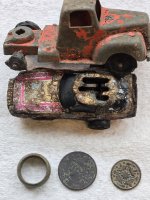rgb1
Sr. Member
- Nov 24, 2013
- 295
- 769
- Detector(s) used
- 2 whites 1 garett
- Primary Interest:
- All Treasure Hunting
has anybody found mundays inetials any place he traveled with swift it seems they should be found somewhere with swifts seems no one has mentioned this just curious






